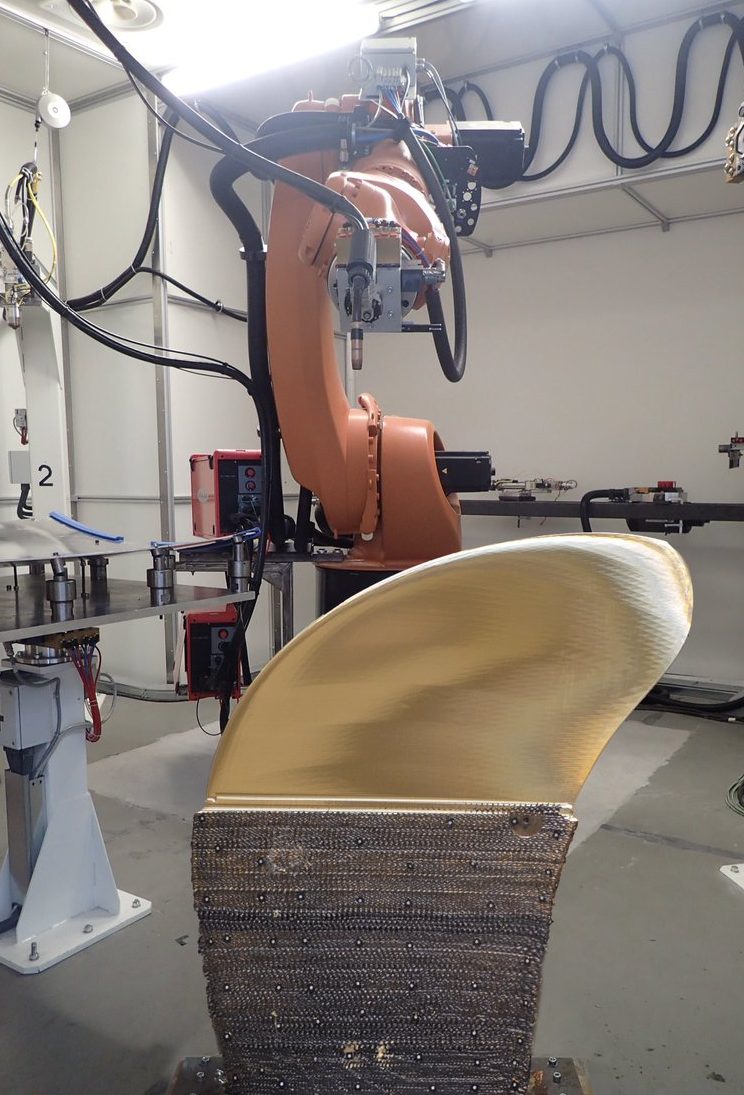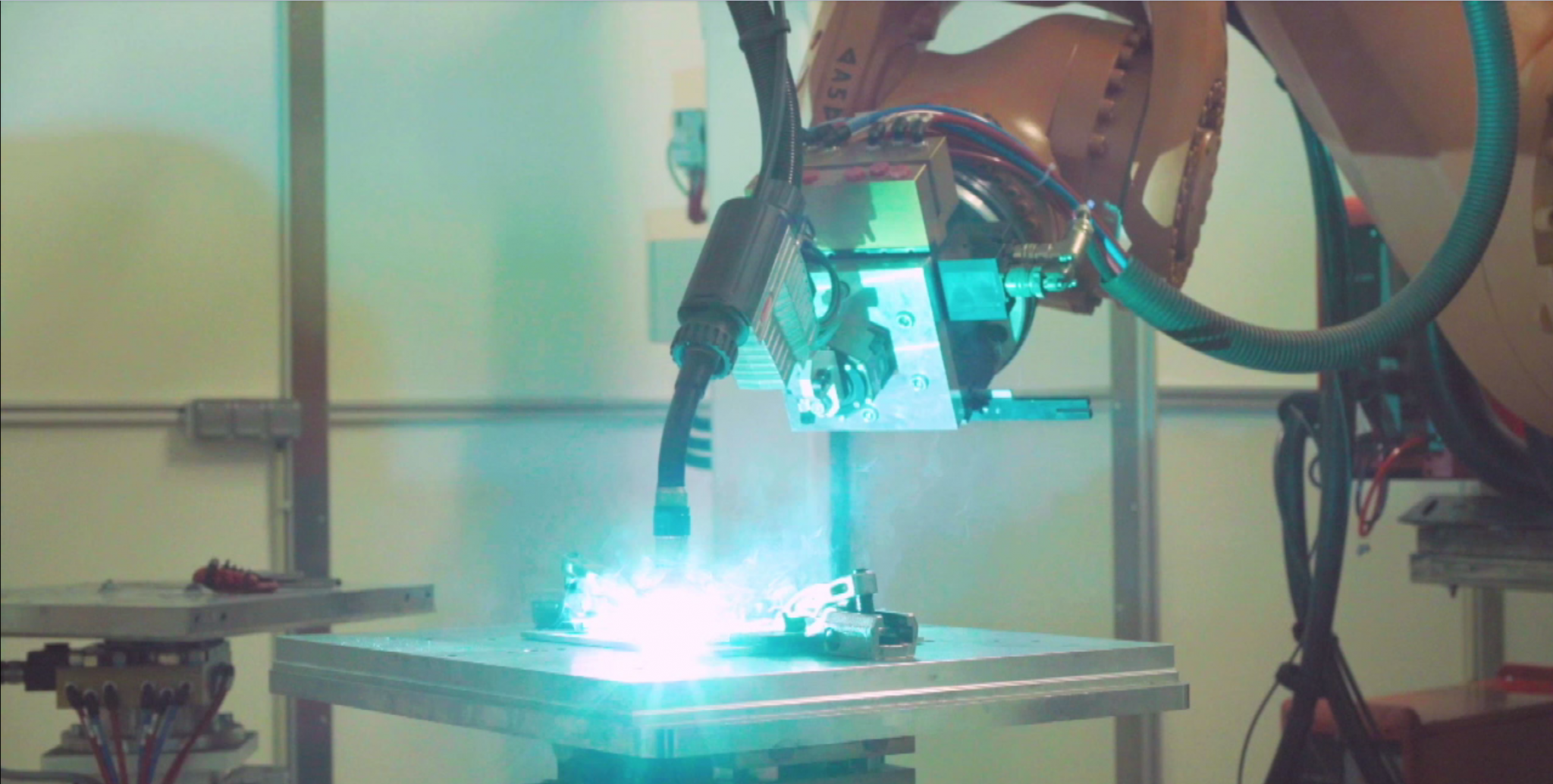Naval Group, a French industrial group focusing on naval defence and marine renewable energy, and Centrale Nantes engineering school have successfully 3D printed their first full-scale propeller blade demonstrator using the Wire Arc Additive Manufacturing (WAAM) process.
This large, geometrically complex blade weighing over 300kg was produced under the framework of the Joint Laboratory of Marine technology, which aims to create qualified naval innovations for application in military shipbuilding.
The production of this propeller is part of longer roadmap to provide greater efficiency for ships at sea by improving performance-based areas such as propulsion and stealth.

Propelling navy operations with AM
Currently in the proof of concept phase of production, this project intends to use its unique propeller blade to demonstrate the capabilities within additive manufacturing, in particular, the WAAM process, for large and elaborate parts.
“Printing this demonstrator is a major step towards the manufacture of innovative propellers by additive manufacturing. These initial results mean that it’s possible to envisage the short-term commissioning of differentiated propellers for the ships that will use them,” stated Vincent Geiger, Director of Naval Group’s Naval Research Technology Research Center.
The WAAM process applies a robotic welding arm which uses an electric arc plasma beam on metal wire feedstock, in this case aluminum-copper alloy, to fabricate 3D objects. This process also has the ability to print on existing surfaces such as the center of a propeller.

Centrale Nantes utilized its industrial capabilities as well as its expertise in trajectory generation and additive manufacturing to help produce the propeller blade.
Professor Jean-Yves Hascoët, an expert in additive manufacturing and leader of the Rapid Manufacturing Platform at Centrale Nantes further explained the benefits of implementing AM.
“Additive manufacturing is a process that offers unlimited possibilities: less material used, integration of additional features and geometrically-complex parts assembly. It allows for new designs, weight savings, lower manufacturing costs.”
Metal additive manufacturing and naval applications
As a solution to the design limitations of traditional manufacturing, metal additive manufacturing has proven its worth within the naval and military industries.
Previously, the Netherlands-based additive manufacturing field lab, RAMLAB revealed its first ship propellor component produced using the WAAM process along with subtractive machining that will aid in the rapid repair of large naval ships.
Furthermore, 3D Systems, an industrial equipment provider based in San Francisco, announced a collaboration with the U.S’ largest military shipbuilding company, Huntington Ingalls Industries’ Newport News Shipbuilding division to build a naval warship using metal additive manufacturing.
As a result of this partnership, Kevin McAlea, Executive Vice President of Health and Metals at 3D Systems believes that metal AM’s disruptive technologies will streamline the production process of naval ships.
“Through this collaboration with Newport News Shipbuilding, our 3D printing solution combined with our team’s expertise in metal 3D printing technology will redefine the supply chain for naval ship components – improving efficiencies and lowering total cost of operation.”
The industrial technology transfer of Naval Group and Centrale Nantes’s full-scale propeller blade is currently in progress as the project progresses to the next stage and moves beyond proof-of-concept.
Keep up with the latest in additive manufacturing by subscribing to the 3D Printing Industry newsletter. Also, follow us on Twitter, and like us on Facebook.
Looking for a change of pace or seeking new talent? Search and post 3D Printing Jobs for opportunities and new talent across engineering, marketing, sales and more.
Featured image shows KUKA robotic arm during the WAAM process for the 3D printed propeller blade. Photo via Centrale Nantes.


